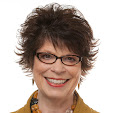skip to main |
skip to sidebar
 "What?" "I'm sorry, what did you say?" Sound familiar? There are lots of reasons why people might not listen to us. They're busy. We catch them in the hall with a "Got a minute?" We ramble. We need to figure out how to get them to listen.
Try Procedure Setting. It's a three step process:
1. State your desire to talk.
2. State how long it will take. This step is critical. It requires you to know what you're going to say, knowing how long it will take and sticking to that time frame.
3. Ask if this is a good time to talk.
If they say "No," ask them, "When would be a good time to talk?" Now you've got to hold them to it. You'll want to verify a time and place. Then send them an Outlook New Meeting Request that will show up on their calendar. When the meeting time arrives, be sure you get to the point, stick to your original time frame and, er, uh, uhm. Oh! Don't ramble!
"What?" "I'm sorry, what did you say?" Sound familiar? There are lots of reasons why people might not listen to us. They're busy. We catch them in the hall with a "Got a minute?" We ramble. We need to figure out how to get them to listen.
Try Procedure Setting. It's a three step process:
1. State your desire to talk.
2. State how long it will take. This step is critical. It requires you to know what you're going to say, knowing how long it will take and sticking to that time frame.
3. Ask if this is a good time to talk.
If they say "No," ask them, "When would be a good time to talk?" Now you've got to hold them to it. You'll want to verify a time and place. Then send them an Outlook New Meeting Request that will show up on their calendar. When the meeting time arrives, be sure you get to the point, stick to your original time frame and, er, uh, uhm. Oh! Don't ramble!
I'm sure you haven't made as big a gaffe as the former CEO of BP, Tony Hayward. Yet, even the best speakers fall prey to some stumbling blocks─whether we're talking one-to-one or to the world. Once we identify ours, we can work to eliminate them and get on with the business at hand. Review this checklist and see how you do─you'll find some examples following each stumbling block:
Hedge statements and qualifying phrases: This may not be important, but…
Tag questions: Don’t you agree? OK? All right? The company car will be available, won’t it?
Exaggerated superlatives: awesome, amazing, fabulous…
Excessive apologies: sometimes "I'm sorry" are the only words that work; we just want to avoid excessive use of them.
Self-effacing remarks: I’m just a… Well, I’ve done my best under tough circumstances…
Overexplanations─many examples when one good one will do. Get to the point!
Fillers: Um, er, like, you know, like, OK─you know...
Rambling─we must know when to stop!
Undefined jargon and acronyms. Every industry has them─what are some of yours?
It takes six weeks of concentrated effort to eliminate a nagging habit, so settle on the one that sabotages your credibility and get to work!
You've seen the articles: "Death by PowerPoint" and other extremely uncomplimentary headlines. Many times these pejoratives are well deserved. Yet, research shows the power of visuals─see a previous post for details. To take your PowerPoints from groan to great, follow these guidelines:
Strive for simplicity
• Limit graphics
• Use bullets instead of complete sentences
• Don't overuse animation─spinning transitions grow old after one!
• Use only 2-3 colors. No surprise, blue is the favorite color of 80% of Americans.
• Strive for the strongest possible foreground/background contrast. Dark type against a light background is easiest to read─especially in subdued lighting. When using light type against a dark background, make sure it's legible.
• Recolor charts, clip art and illustrations to match your palette
Let legibility be your guide
Focus on Fonts
• Use only one or two fonts
• Pick one with a black or heavy version to make titles stand out
• Use sans serif fonts—Arial and Verdana are two classics
• 24 point is the smallest font to use—bigger is better!
• Avoid all caps—they slow down your reader by 13.4%
• Do not underline
Follow the 6 x 6 Rule, then change it up!
• 6 lines per slide
• 6 words per line
• For change of pace, have a slide with a single quote or few words
Keep punctuation to a minimum, avoid:
• Slashes—look like letters when projected
• Exclamation points—often look like the letter “I”
• Periods at end of lines—they’re usually not complete sentences
• Awkward line breaks
Choose an easy to read layout
• Set type ragged right
• Use centering sparingly─difficult to find the beginning of lines
• Use two to three indent levels─maximum
Edit ruthlessly
• Eliminate introductory words—the, in addition
• Avoid awkward line breaks
• Cut redundant words and qualifiers—often, extremely, sometimes
• Replace long words or phrases with short ones
And whatever you do, don't read from your PowerPoint. Well, occasionally I'll read a quote for effect, but to read endlessly from your slides is insulting to your audience. And boring!




